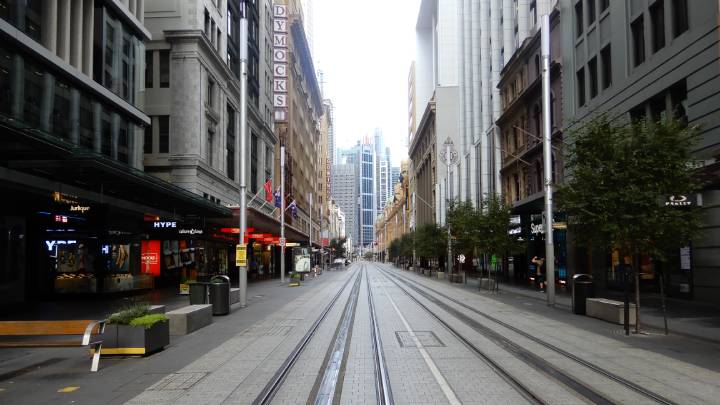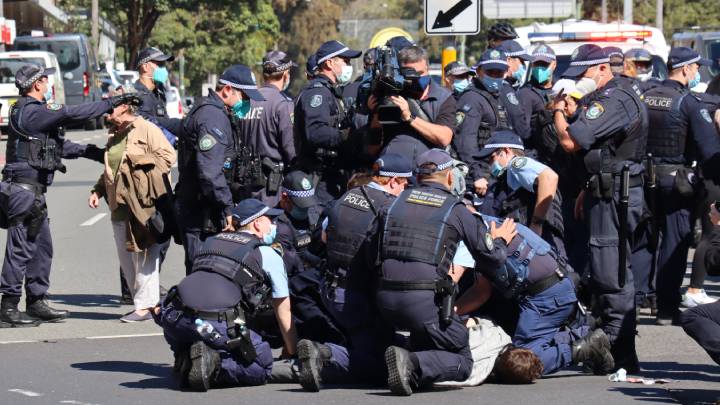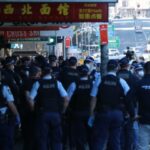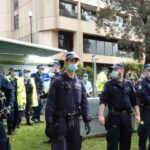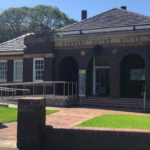Deepening Lockdown Divisions, Pending COVID Deaths and the Pandemic Election
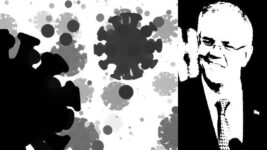
“If not at 70 percent and 80 percent, then when?” Scott Morrison rhetorically asked Australians at a press conference on Monday.
The PM was referring to the percentage of the adult population to be fully vaxxed that will warrant those parts of the nation currently under lockdown to begin emerging out from it.
As the prime minister would know, his use of the rhetorical question serves as a rather blunt instrument, leaving listeners with the understanding that there’s no other choice than that which he’s presenting.
However, right now, there are a multitude of options that can be taken, with most of the community not questioning opening up at the 70 or 80 percent vaccination mark, but rather asking what the accompanying COVID-19 circumstances should be before restrictions are pulled back.
Meanwhile, hovering over Morrison’s head is the looming election that’s set to occur sometime by 21 May next year. And after the chaos of the last eighteen months, pandemic issues – especially lockdown measures – are certain to be front and centre as the constituency takes the vote.
The politics of lockdown
As a virus, COVID-19 is decidedly apolitical. Yet, a year and a half into the pandemic, the crisis has become highly politicised, with the two major parties having taken opposing sides of the lockdown divide, while the wider Australian public is becoming increasingly polarised as well.
This week, Liberal leaders Scott Morrison and NSW premier Gladys Berejiklian have come out hard declaring the nation’s former COVID zero target – opening up with no infections in the community – is no longer viable as Delta variant cases continue to climb in NSW despite nine weeks of lockdown.
Questioning this approach – as well as having taken stricter lockdowns in the past – are the Labor-led states. WA premier Mark McGowan, Queensland premier Annastacia Palaszczuk and Victorian premier Dan Andrews have all continued to attempt to keep their jurisdictions COVID free.
The PM has reminded premiers that they agreed to the opening up plan conceived in July, however Palaszczuk said on Monday that the “goalposts have changed”, as it’s based on lifting restrictions with 30 COVID cases in the community, not the hundreds of daily infections now occurring.
And on being questioned at Monday’s press conference as to whether states that don’t comply with the national opening up roadmap will be penalised, Morrison said, “let’s just see what happens”.
Hypothetical scenarios
The Doherty Report is the modelling that the National Cabinet – the PM, state premiers and territory chief ministers – has based its opening up roadmap upon. The plan has four phases. However, those designing the model only produced data for the first two phases.
Doherty Institute Professor Jodie McVernon told the Saturday Paper that despite being asked for a four phase plan, the institute resolved to only provide modelling for the first two phases, as contemplating beyond the initial six months vision of the pandemic was “just too hard” to do.
But considering the way the PM presents the plan, it might be thought of as gospel and that the modelling actually covers all four phases.
Indeed, McVernon stressed at a 3 August press conference, with the prime minister by her side, that the report presented a “hypothetical scenario that’s a thought experiment, not a prediction”.
The state Labor premiers are questioning Morrison’s assertion that the four phase plan still holds, as the modelling is based on a scenario where restrictions are lifted with 30 cases in the community, but there are now hundreds.
And based on the current modelling, opening up at a 70 percent adult vaccination rate would see 2,000 deaths within the first six months, while 80 percent vaccinations would lead to 1,300 lives lost.
Of course, the Doherty modelling is only one such study. And its figures rely on “optimal” testing, tracing, isolation and quarantine (TTIQ), which has obviously never been the case.
Alternative models have warned of up to 25,000 deaths, while some experts consider an 80 percent vaccination rate should include youths as young as 12 for the inoculation program to be effective, as the current 70 and 80 percent models are based on those 16 years and over.
Yet, despite the picture often being presented in Canberra, all these scenarios rely upon ongoing TTIQ, other virus protection measures, and even the occasional lockdown.
A city torn in two
Continuing in the paternalistic tone that most of the pandemic restriction rollouts have been imposed under, premier Gladys Berejiklian told the state of NSW that when it reached six million fully vaccinated residents it would receive a “treat”.
And after that target was met this week, the reward granted to residents involved five adults being able to gather together outdoors from mid-September onwards.
That is, unless they’re from a local government area “of concern”, and in that case, only fully vaccinated residents from the same household will be able to go outside together.
Thus continues the “tale of two cities” that has been the Greater Sydney lockdown. When the Delta variant initially entered the city’s wealthy WASP east in late June, the restrictions imposed were lax, but when it spread to the less affluent multicultural southwest, a hard lockdown followed.
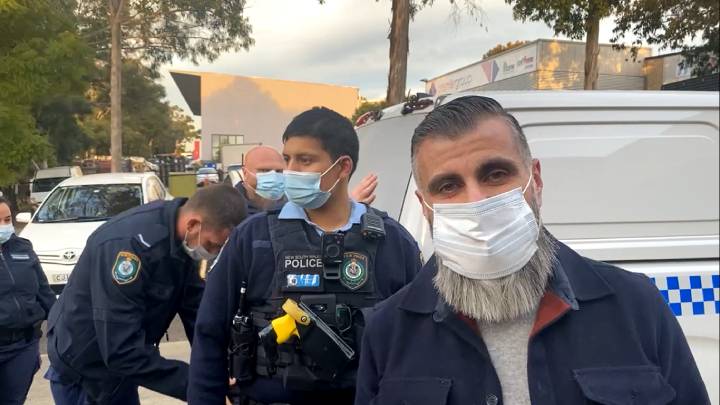
NSW police announced a crackdown in early July that saw the deployment of an extra 100 officers to the southwest Sydney region to ensure locals complied with lockdown measures. And as the case numbers continued to climb, the authorities went on to call in the army to patrol the streets.
The enhanced measures being taken in the southwest, and now in western Sydney as well, have often appeared as targeted punishment, while the rest of the community receives special treatment.
And at the morning COVID press conferences, there has been constant reiteration that these communities are the problem, which has tended towards scapegoating, especially when considering that the state government delayed putting adequate containment measures in place.
So, today, there continues to be twelve local government areas labelled “of concern”, which means they’re under curfew and enhanced policing, while Australian Defence Force troops prowl their streets.
The greater division
Last weekend saw the second major anti-lockdown protest attempted in Sydney. Yet, due to the enhanced police presence, the action was quickly subdued by what appeared to be an equal number of officers facing off against demonstrators.
The unfolding scene had a bizarre aspect to it, as the government ministers ordering law enforcement to quell the unrest seem to be somewhat ideologically aligned with the protesters they’re attempting to suppress.
And as the divide between the government and the people continues to widen, what’s perhaps the greater concern is the emerging division within the community itself, which sees provaxxers against antivaxxers, and pro-lockdowners confronting anti-lockdowners.
This growing disconnect at the grassroots level of our society mirrors a similar division sparked in the US by the coming of former president Donald Trump. And as we’ve witnessed over there, a divide such as this can’t easily be resolved with a national vote.
